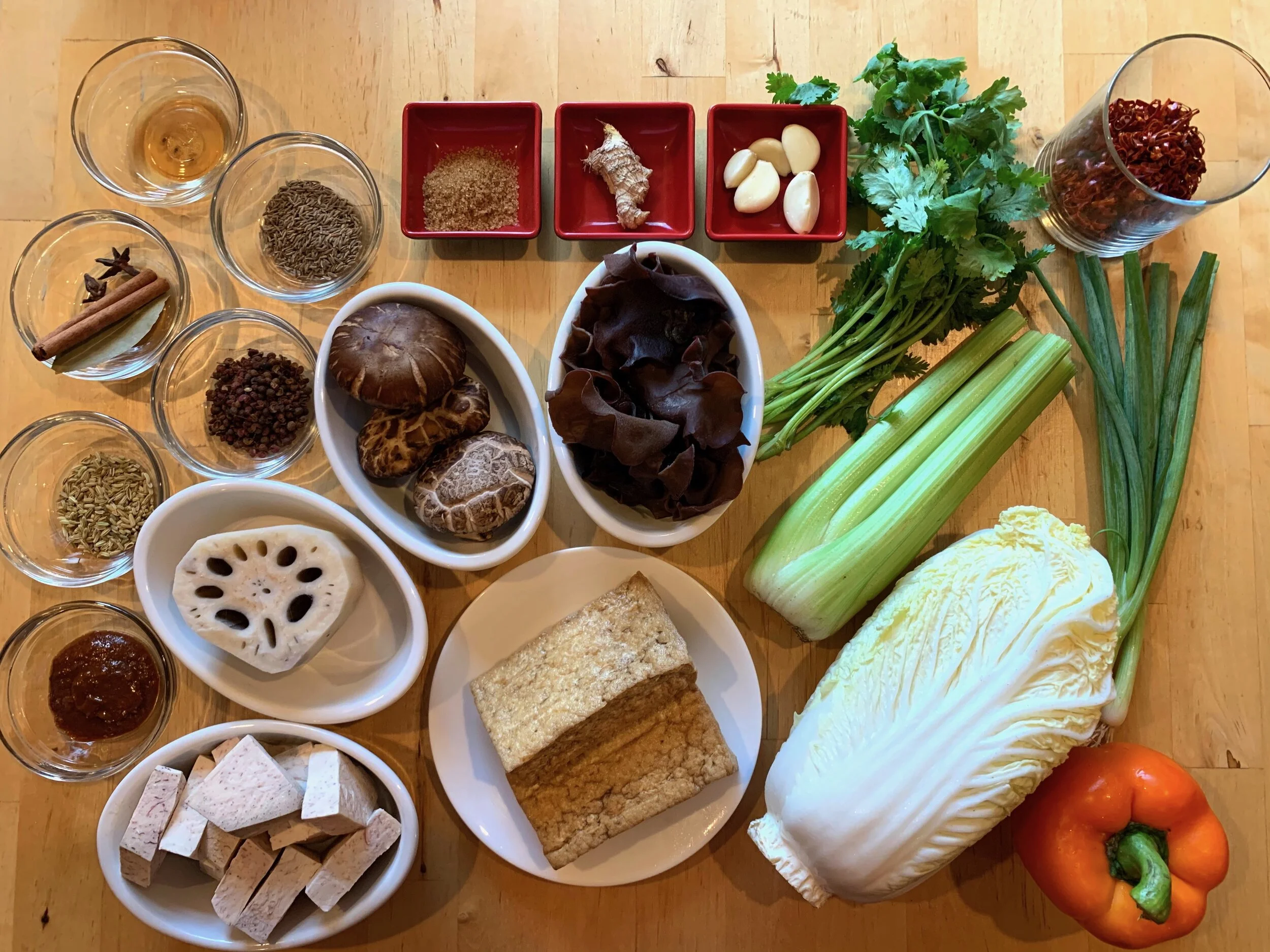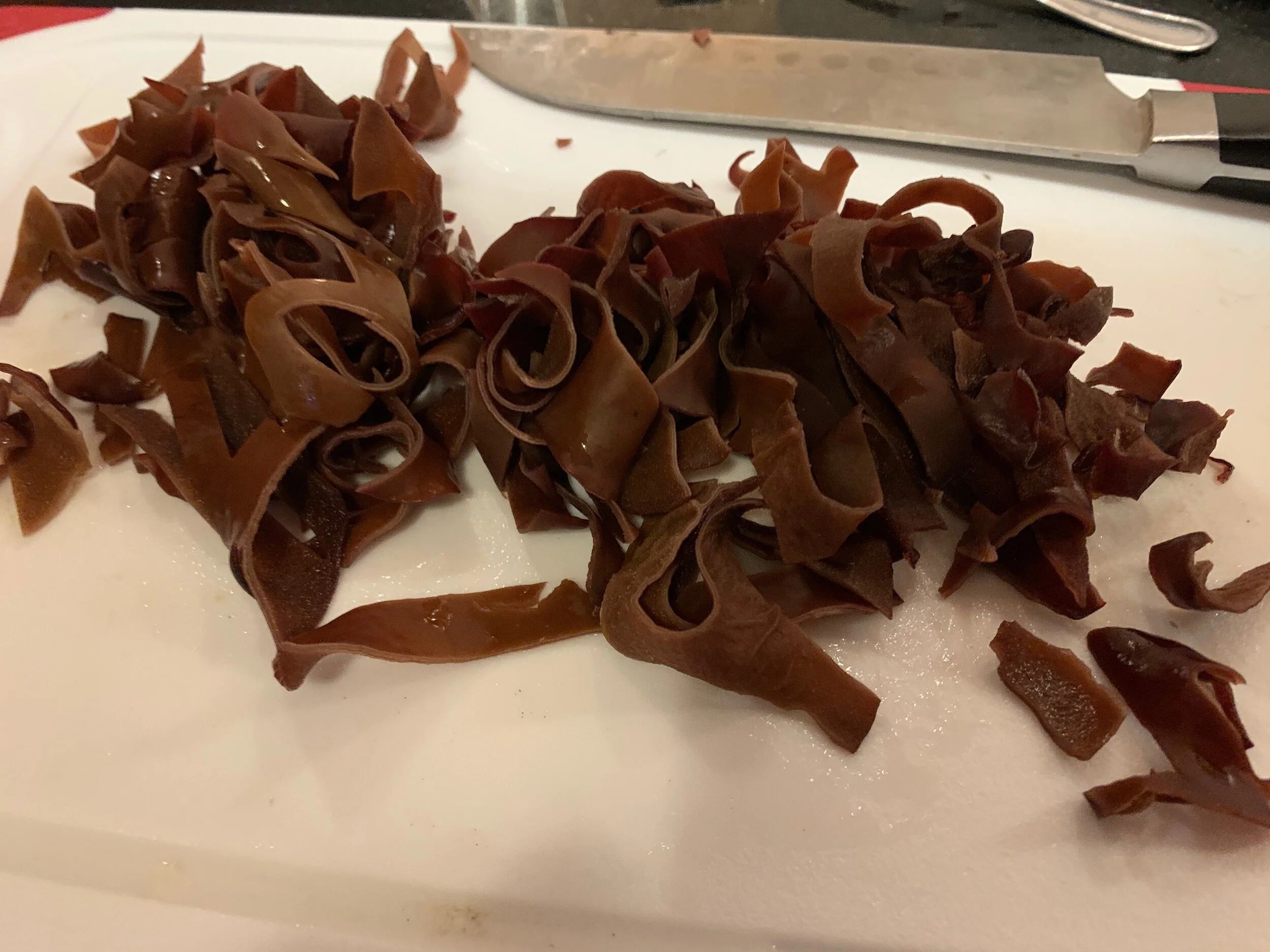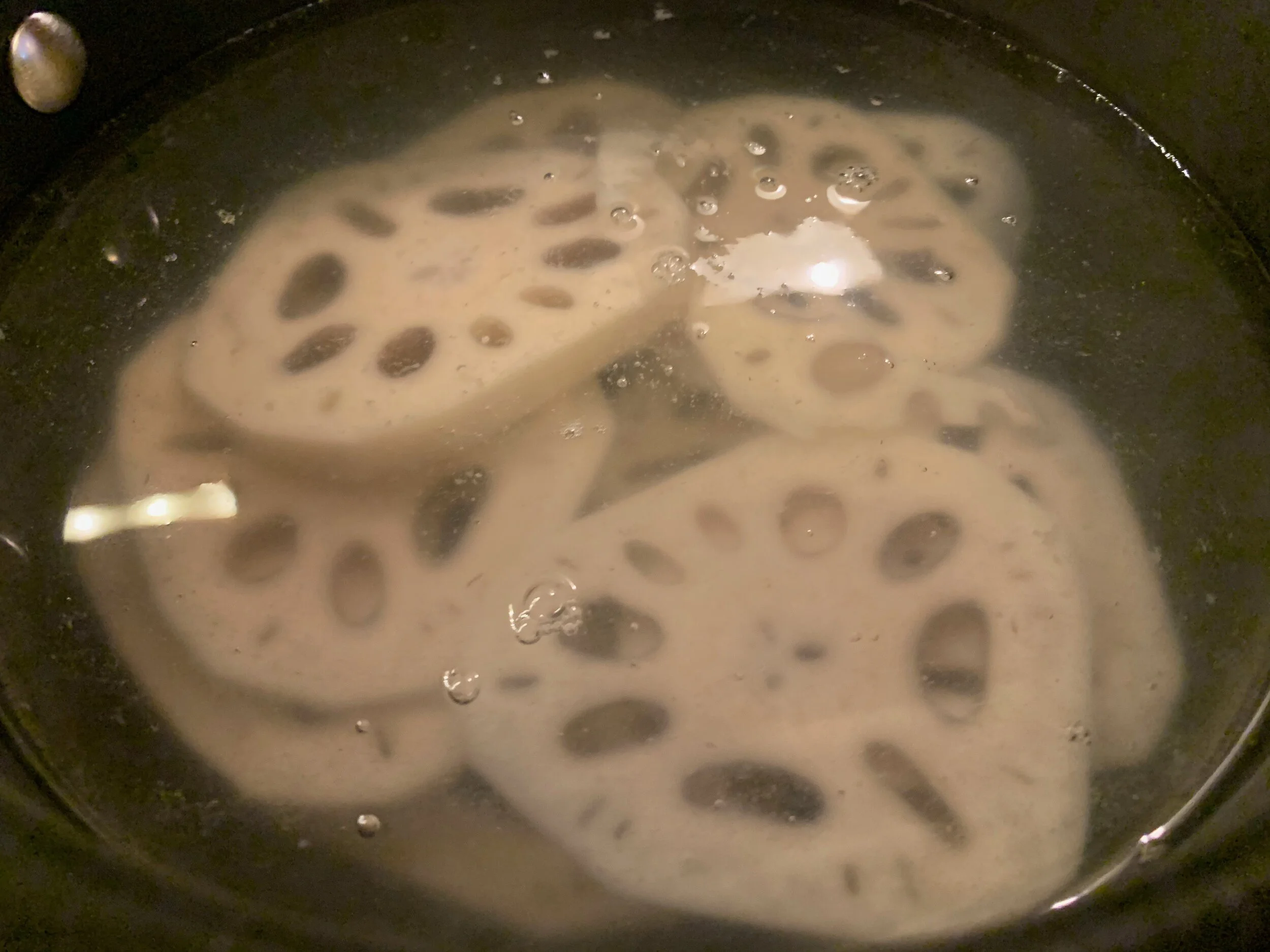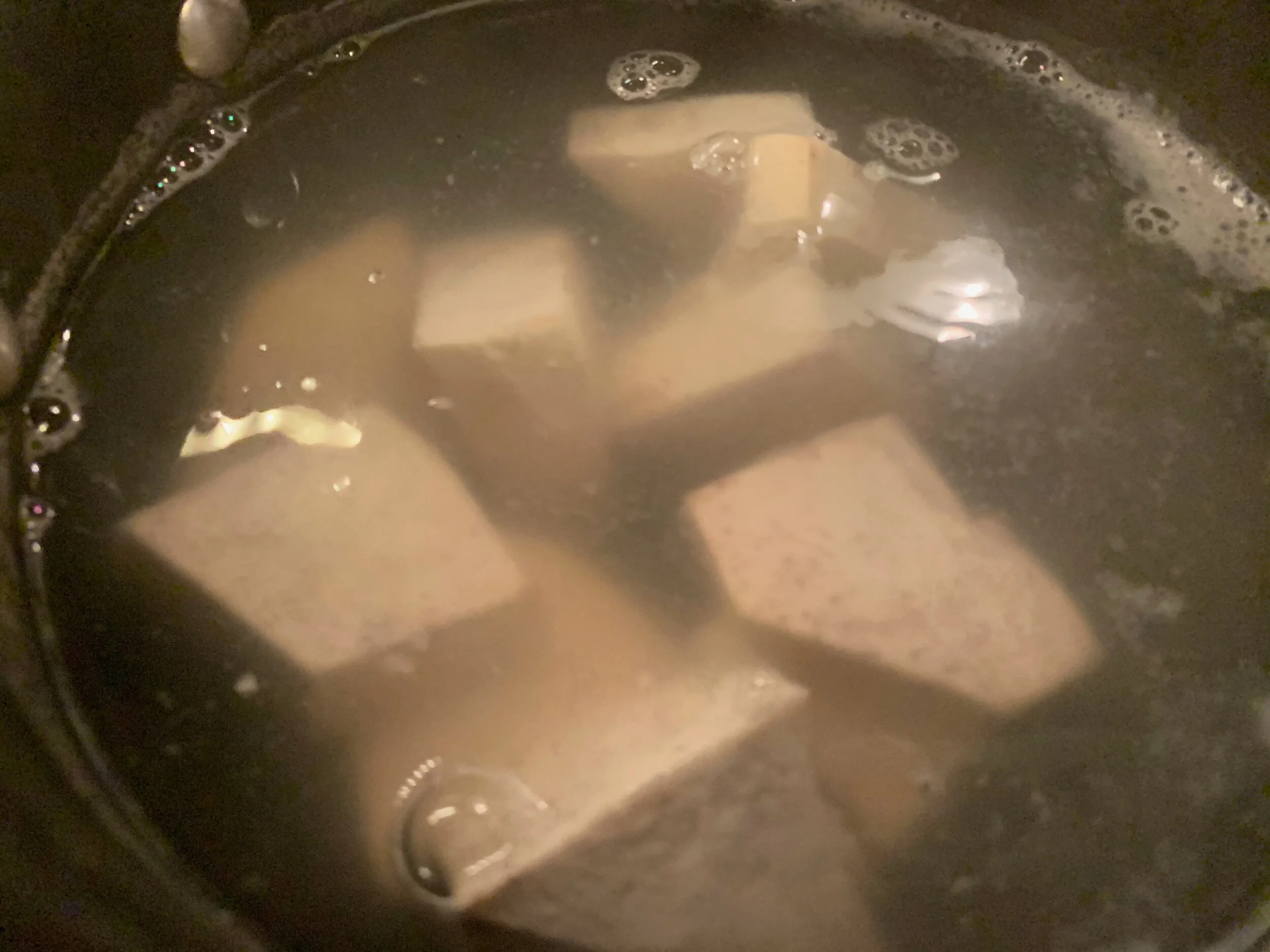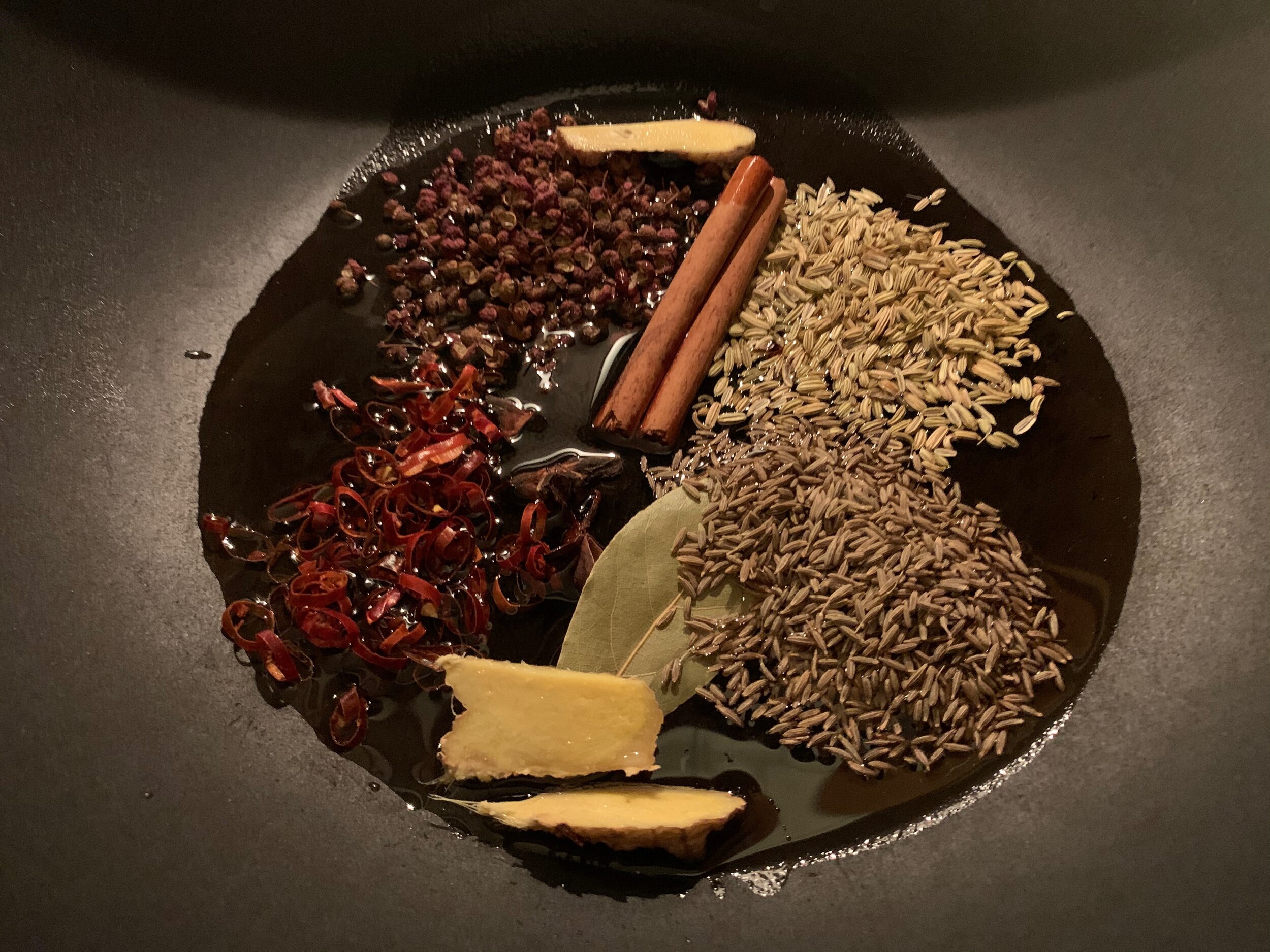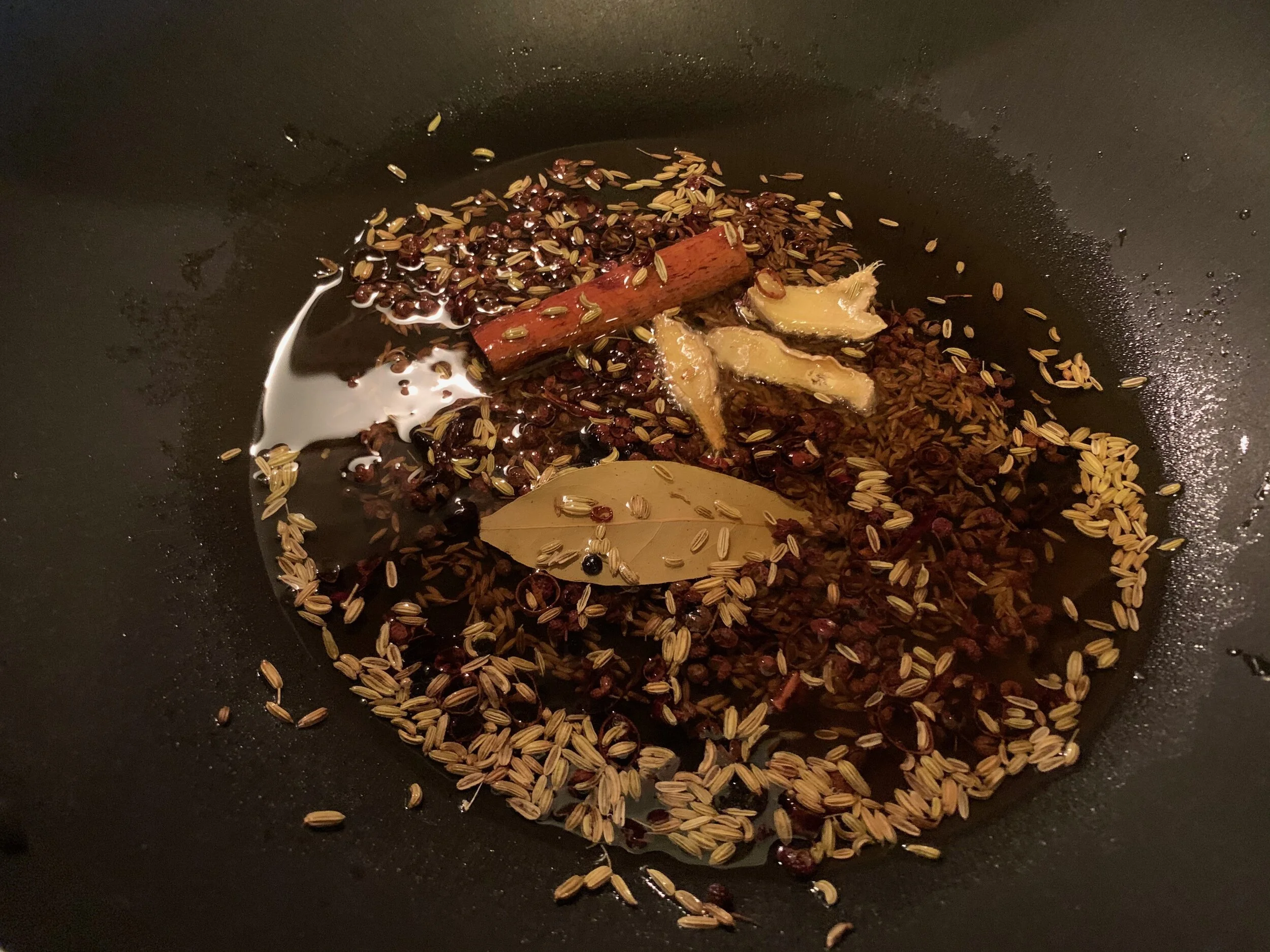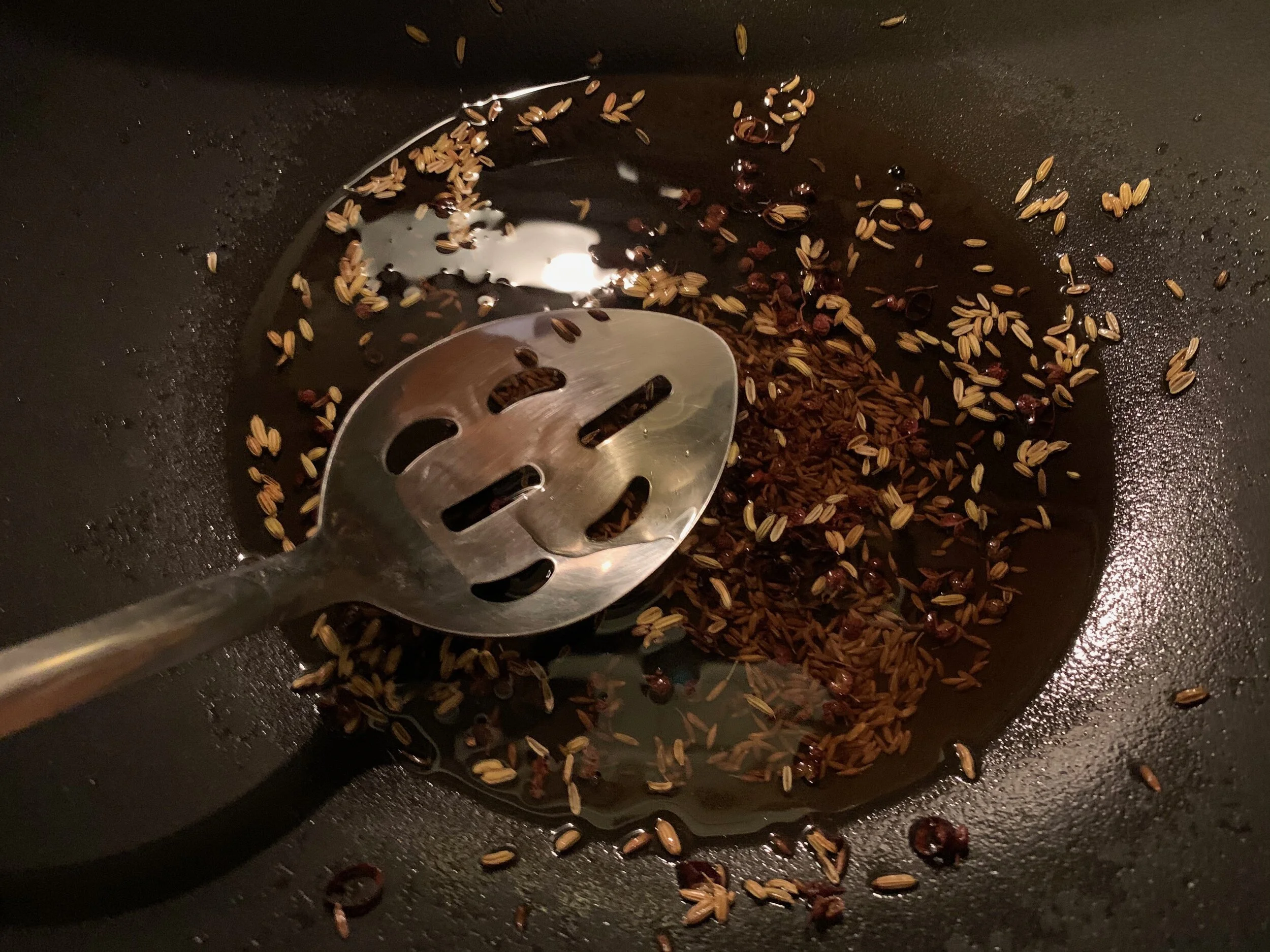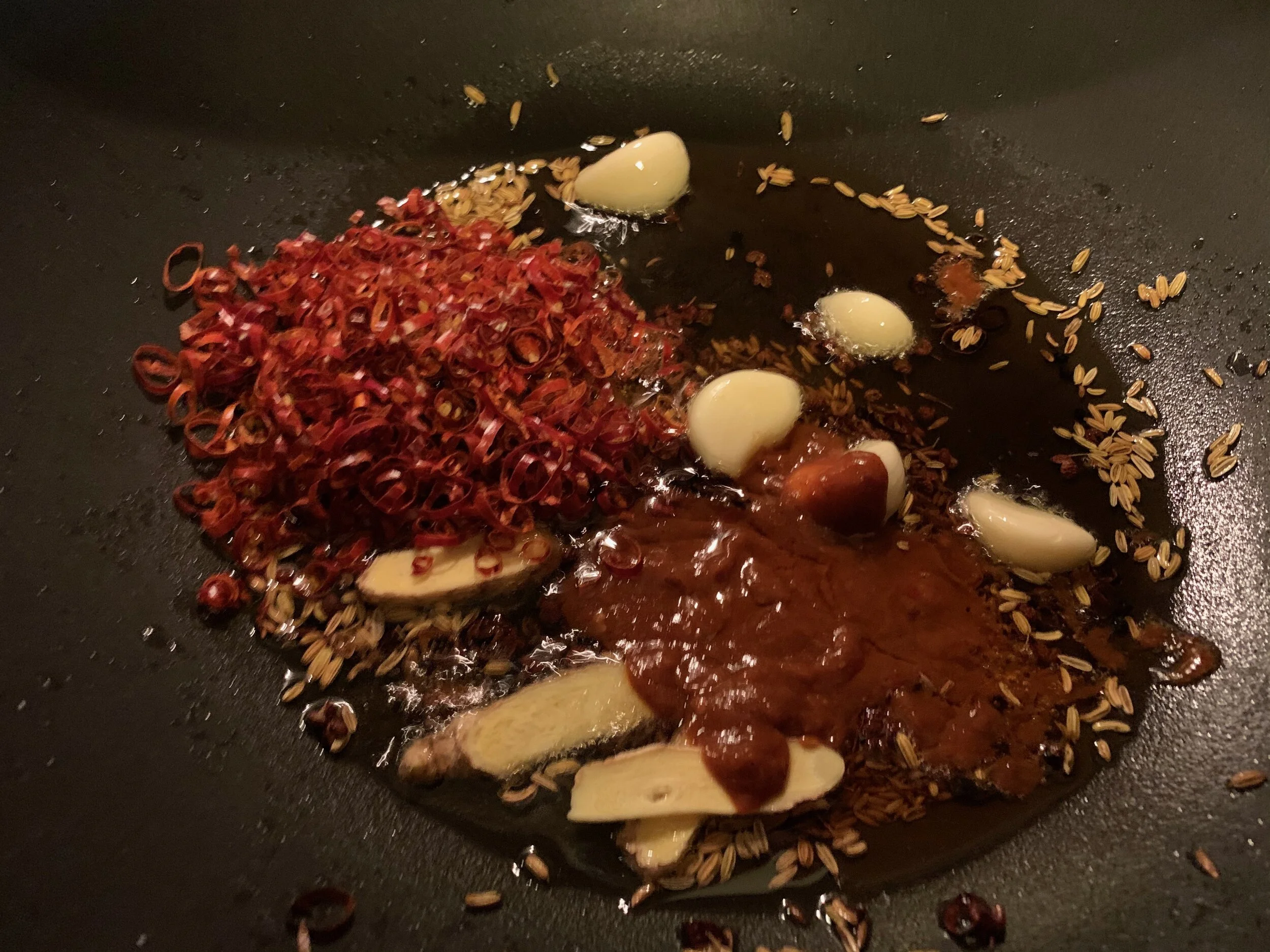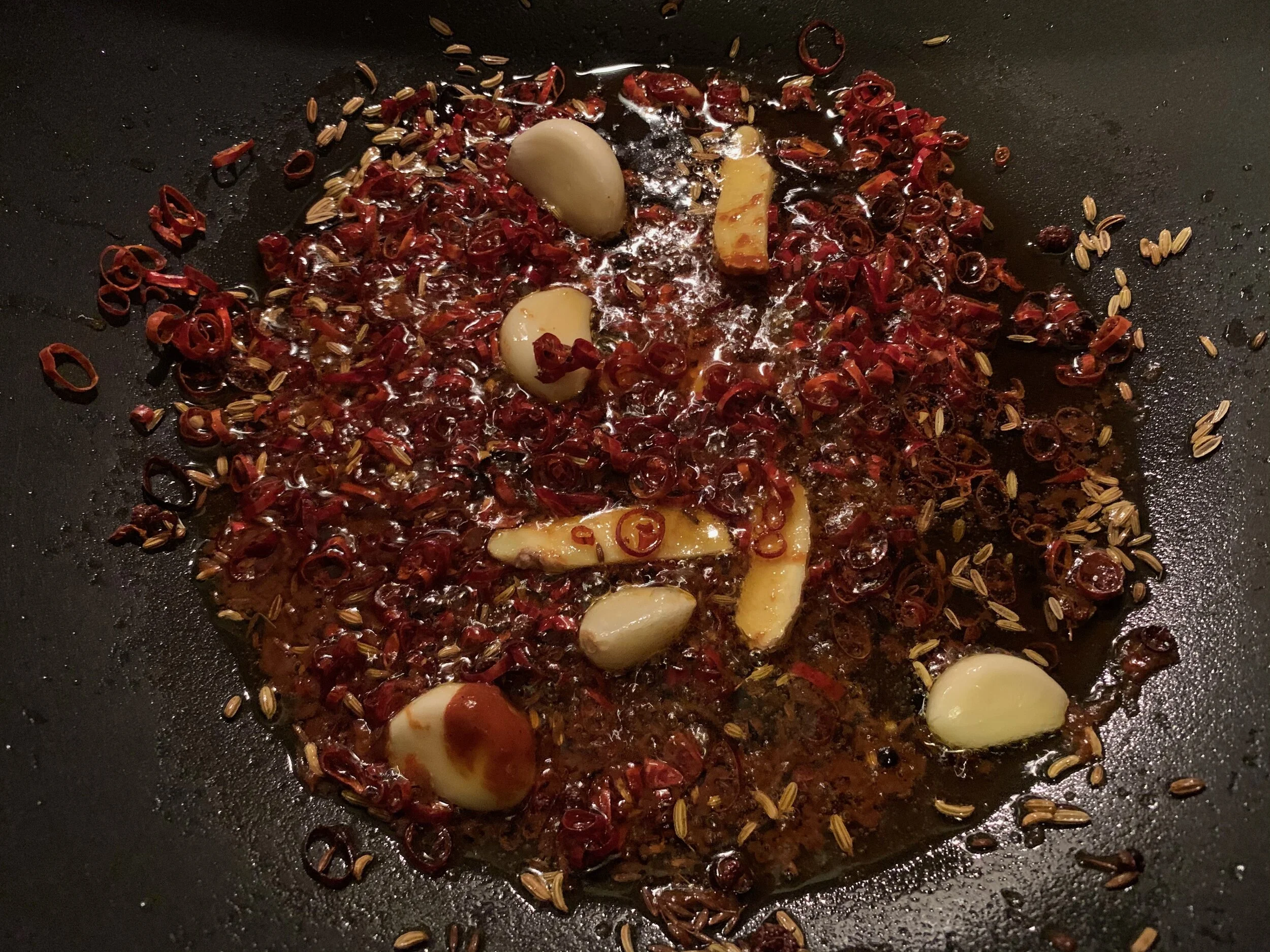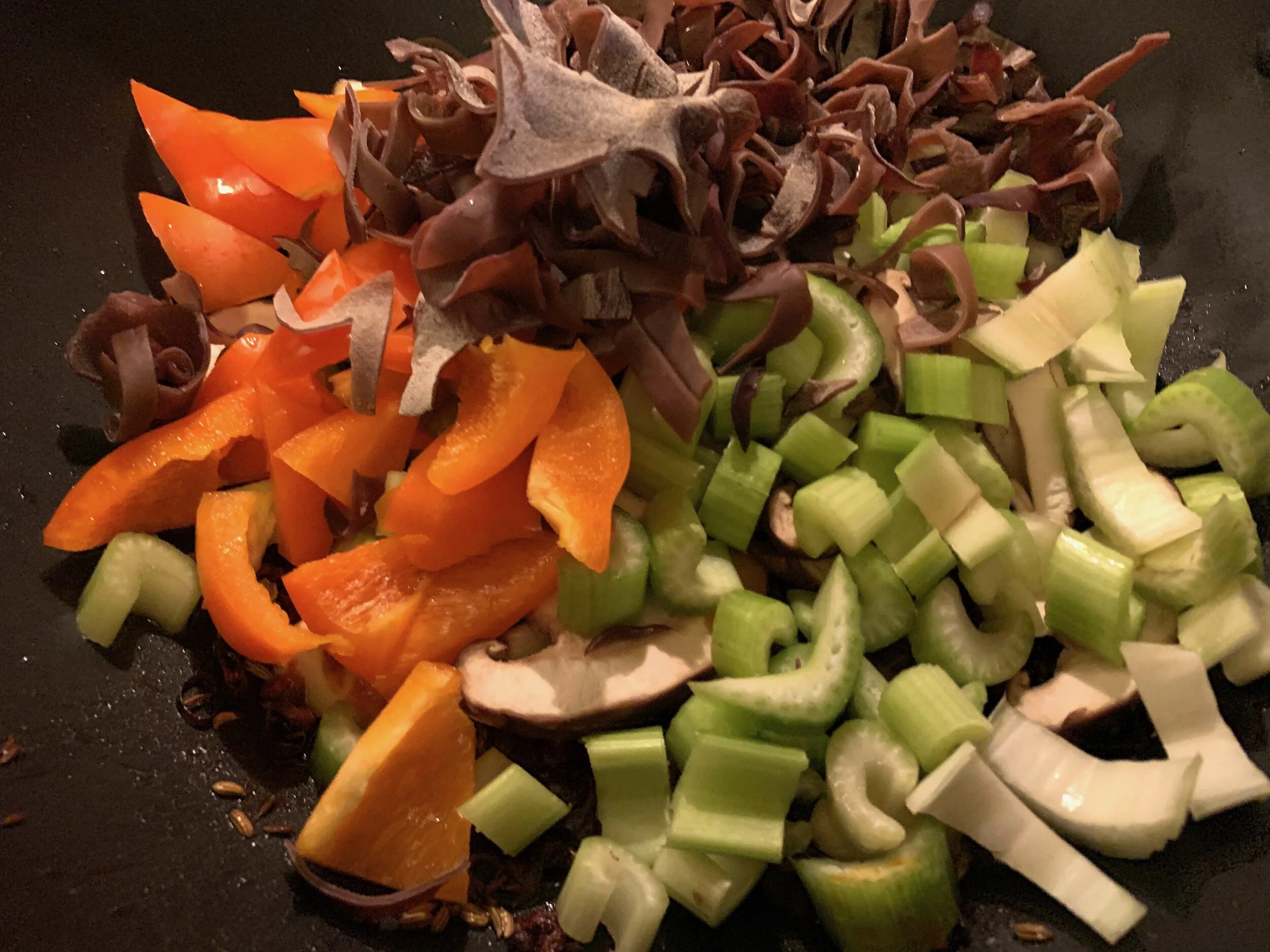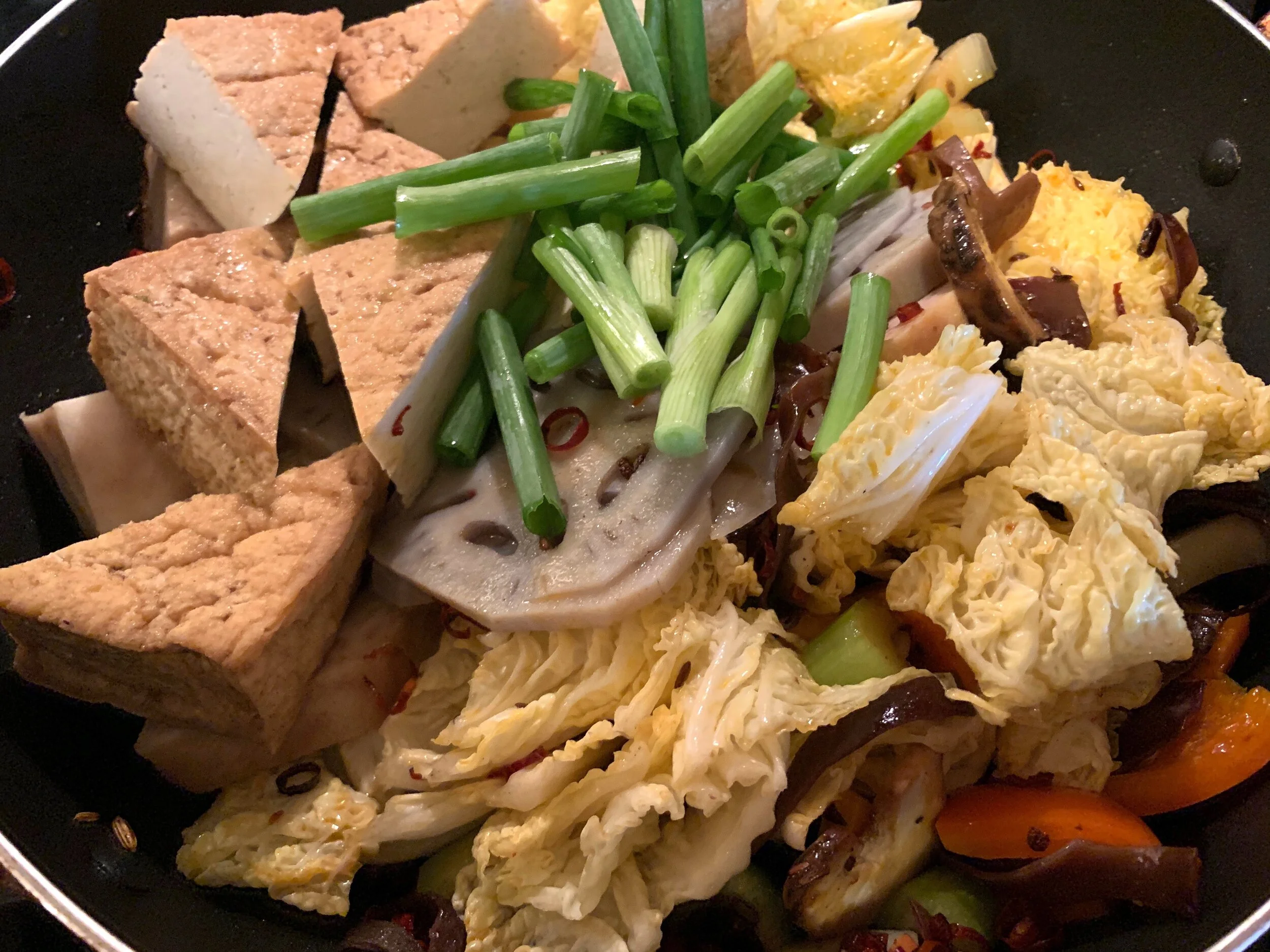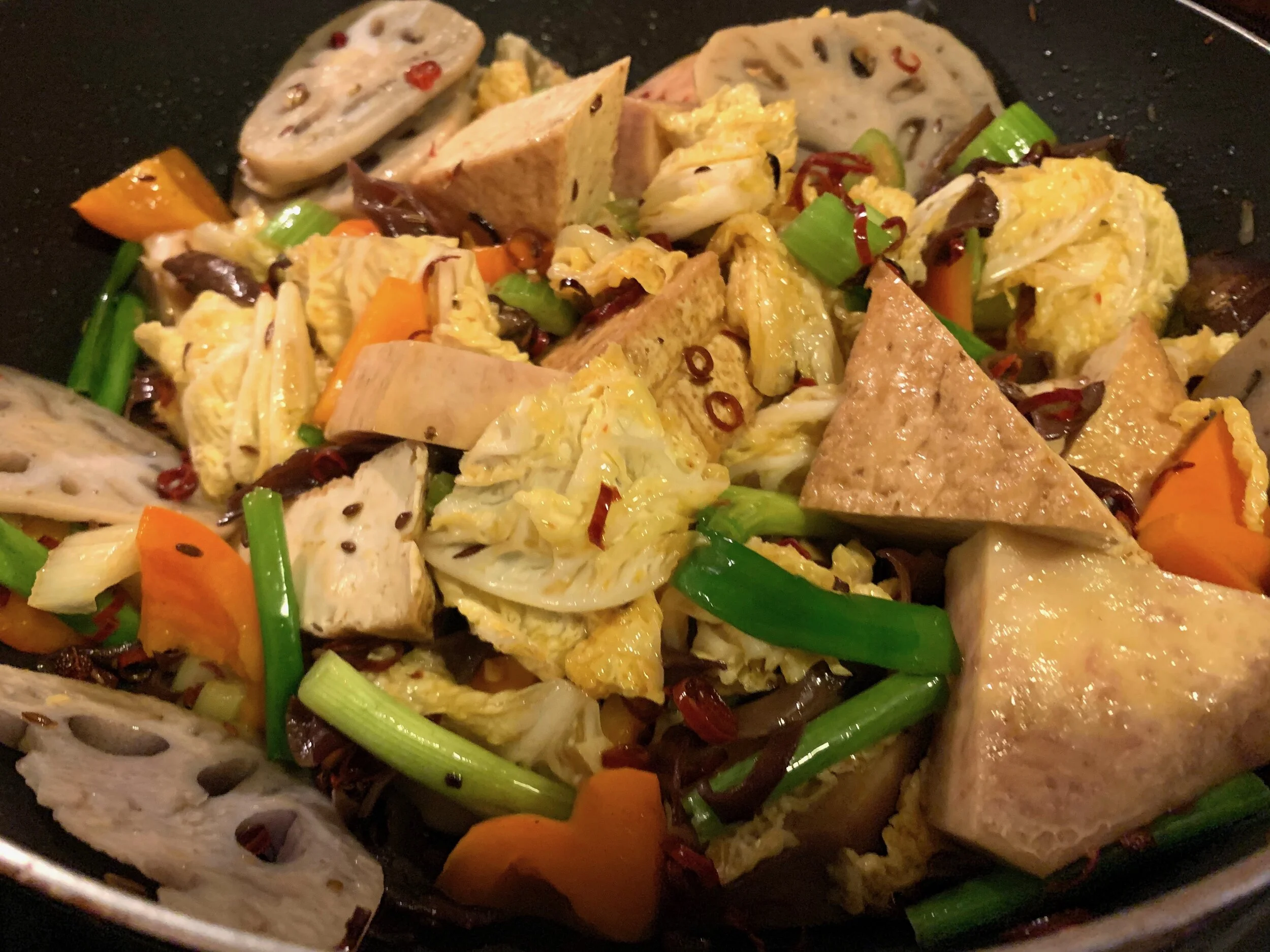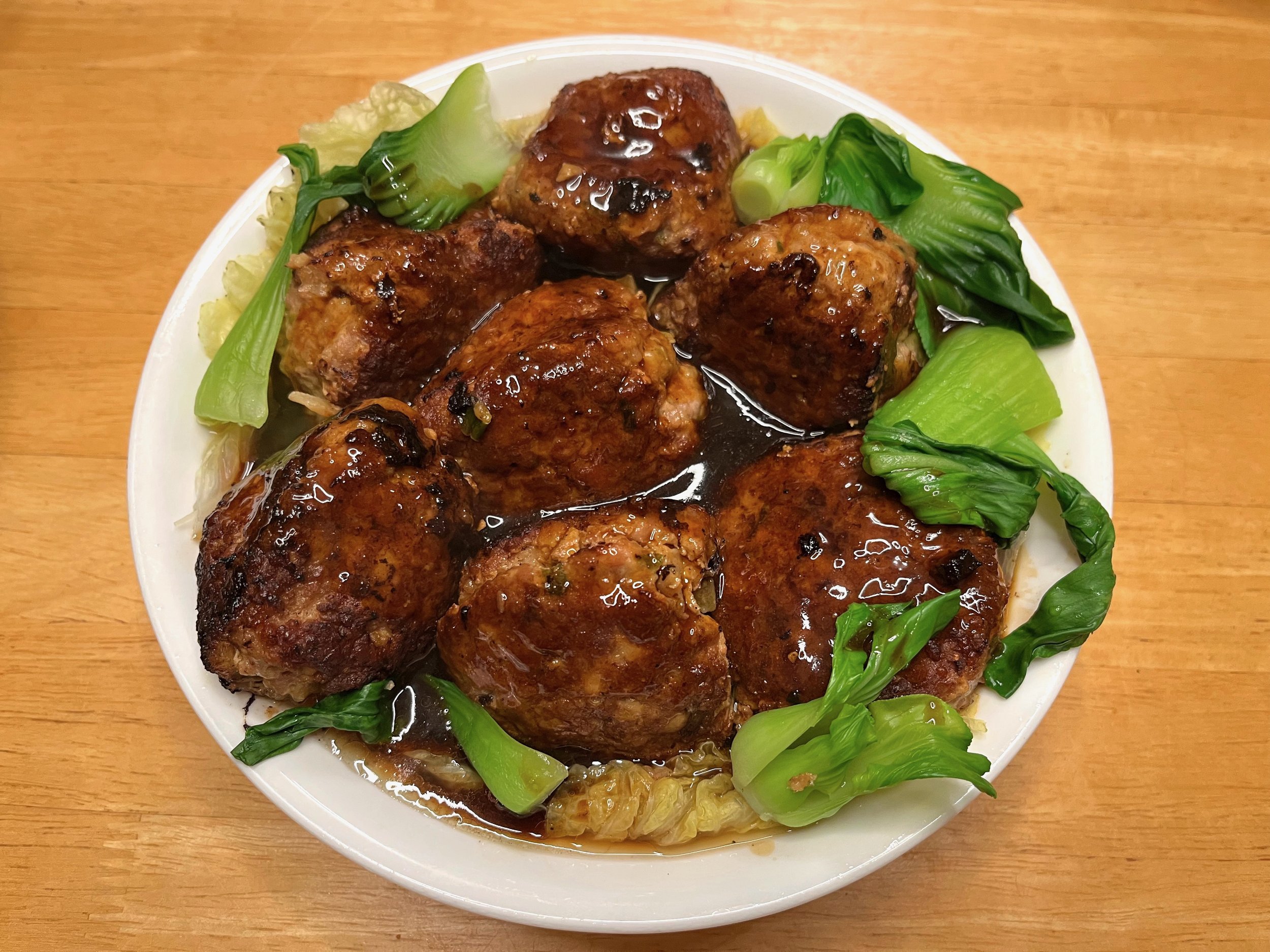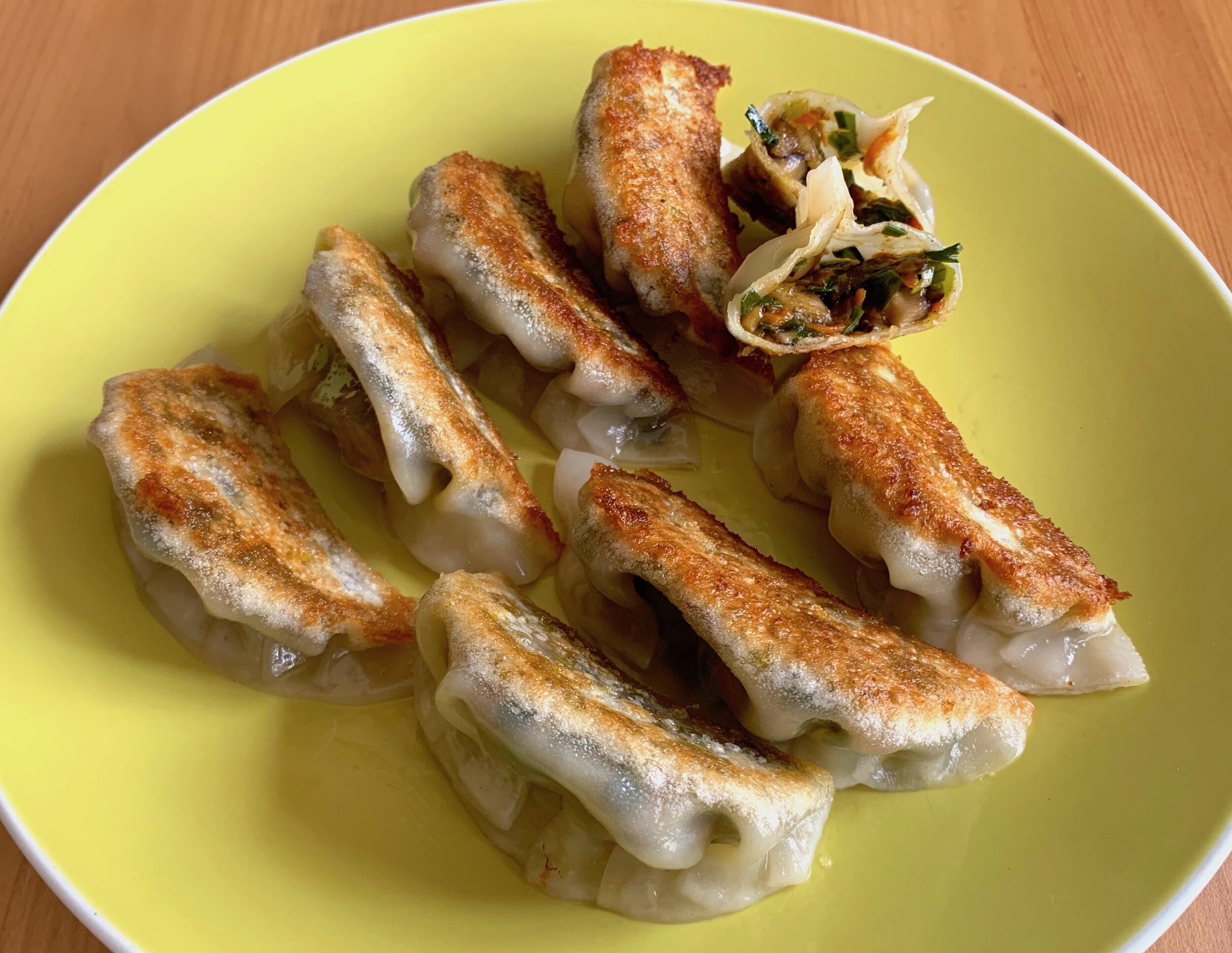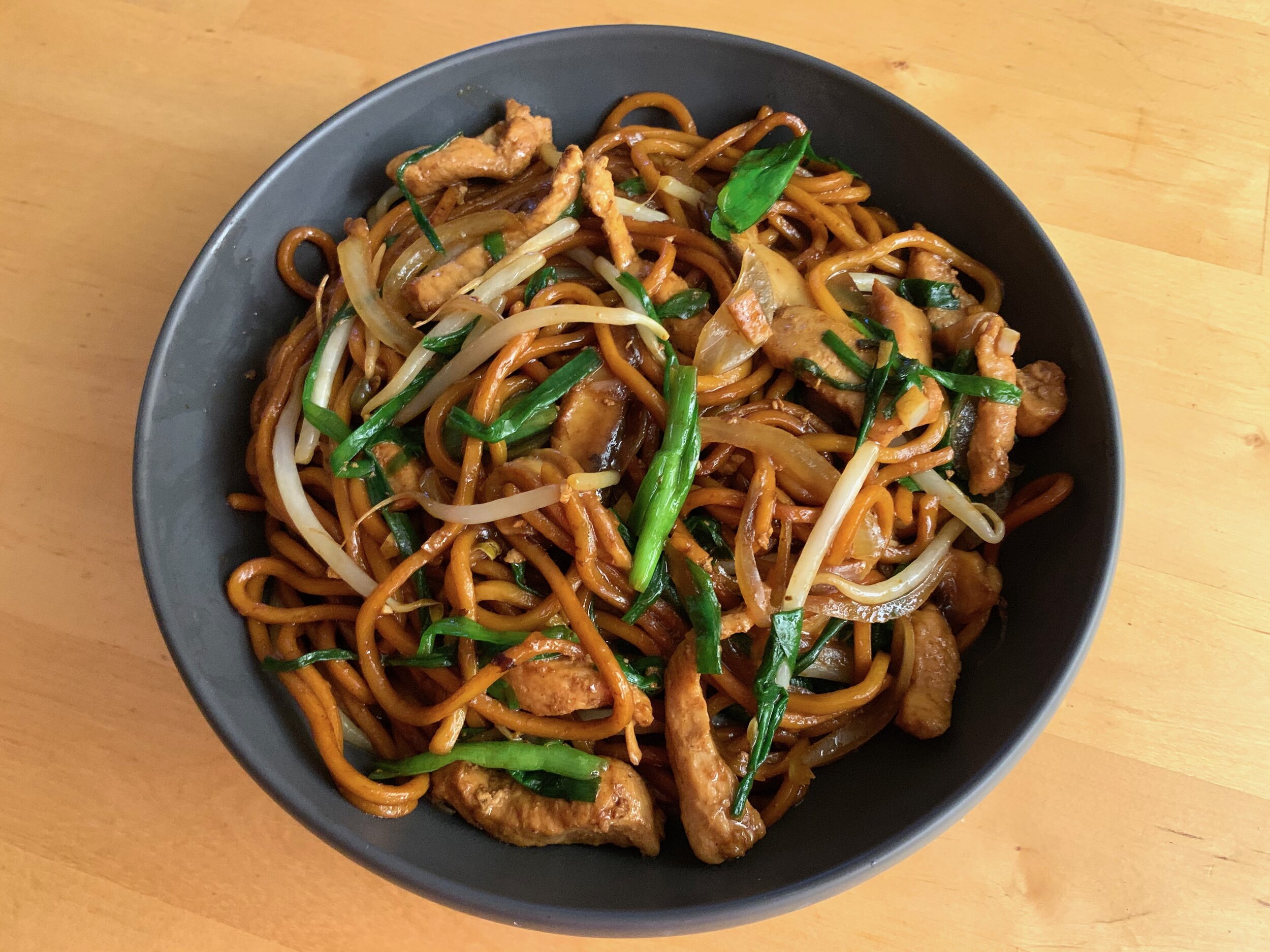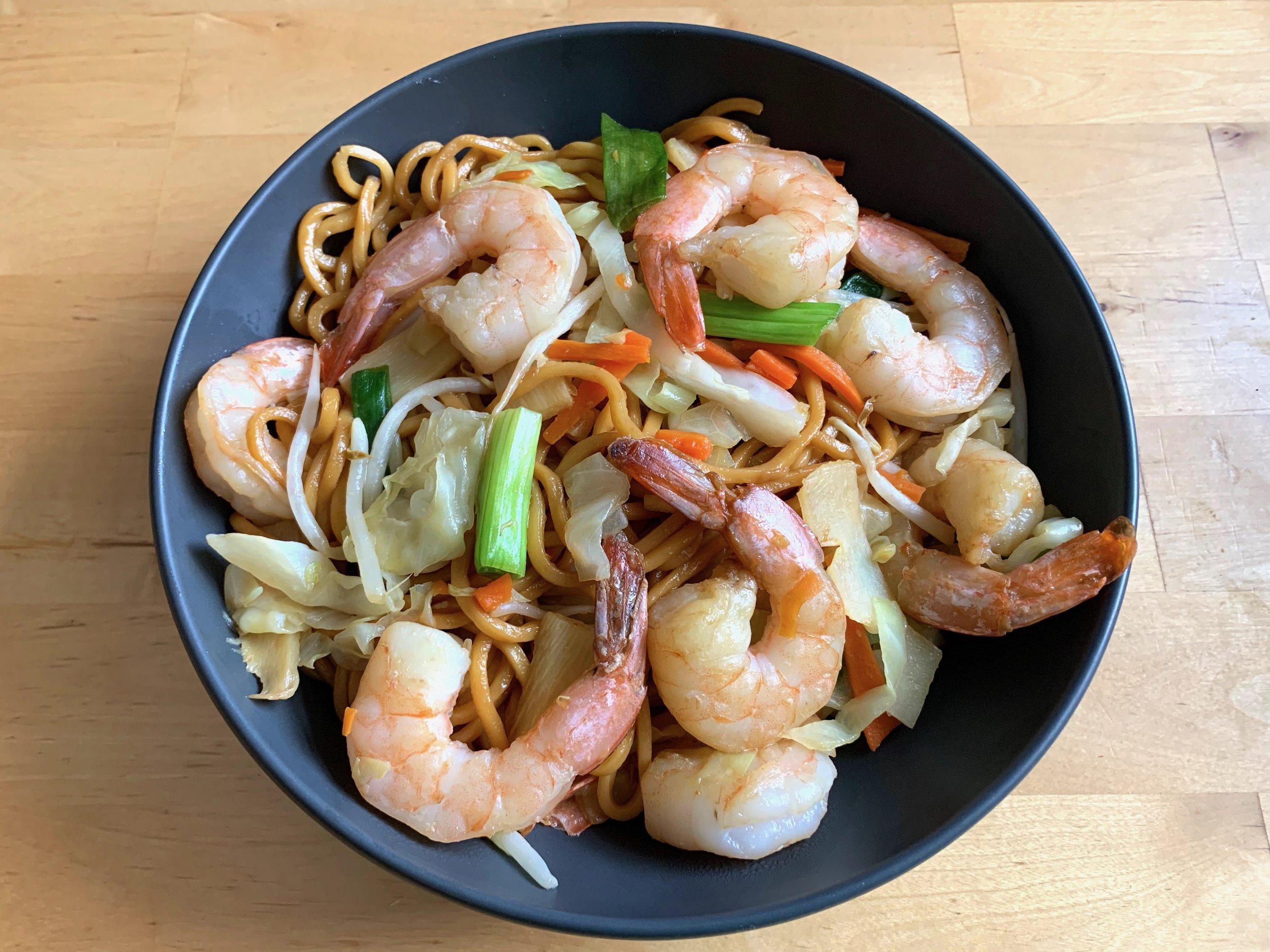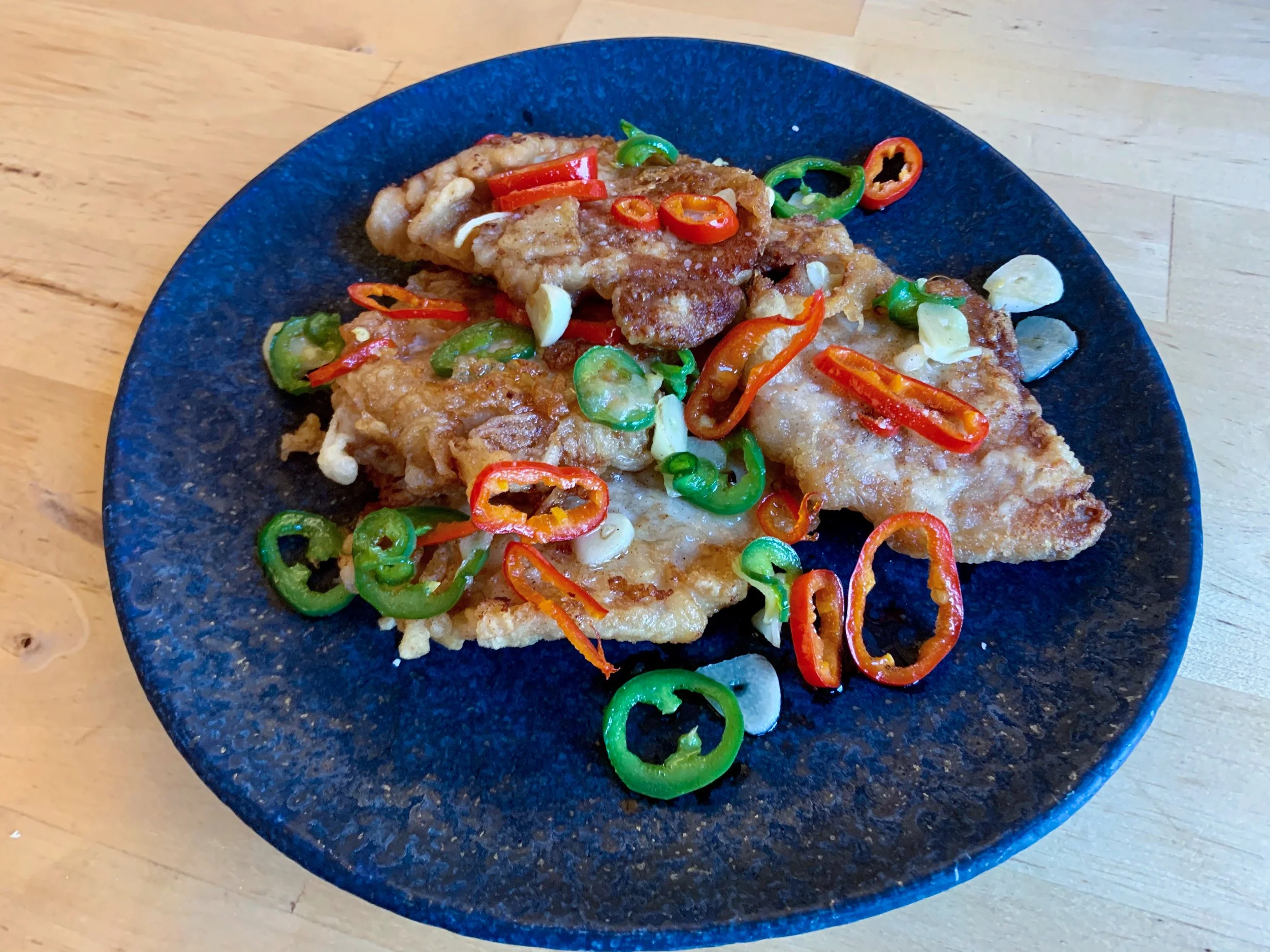Mala Dry Pot
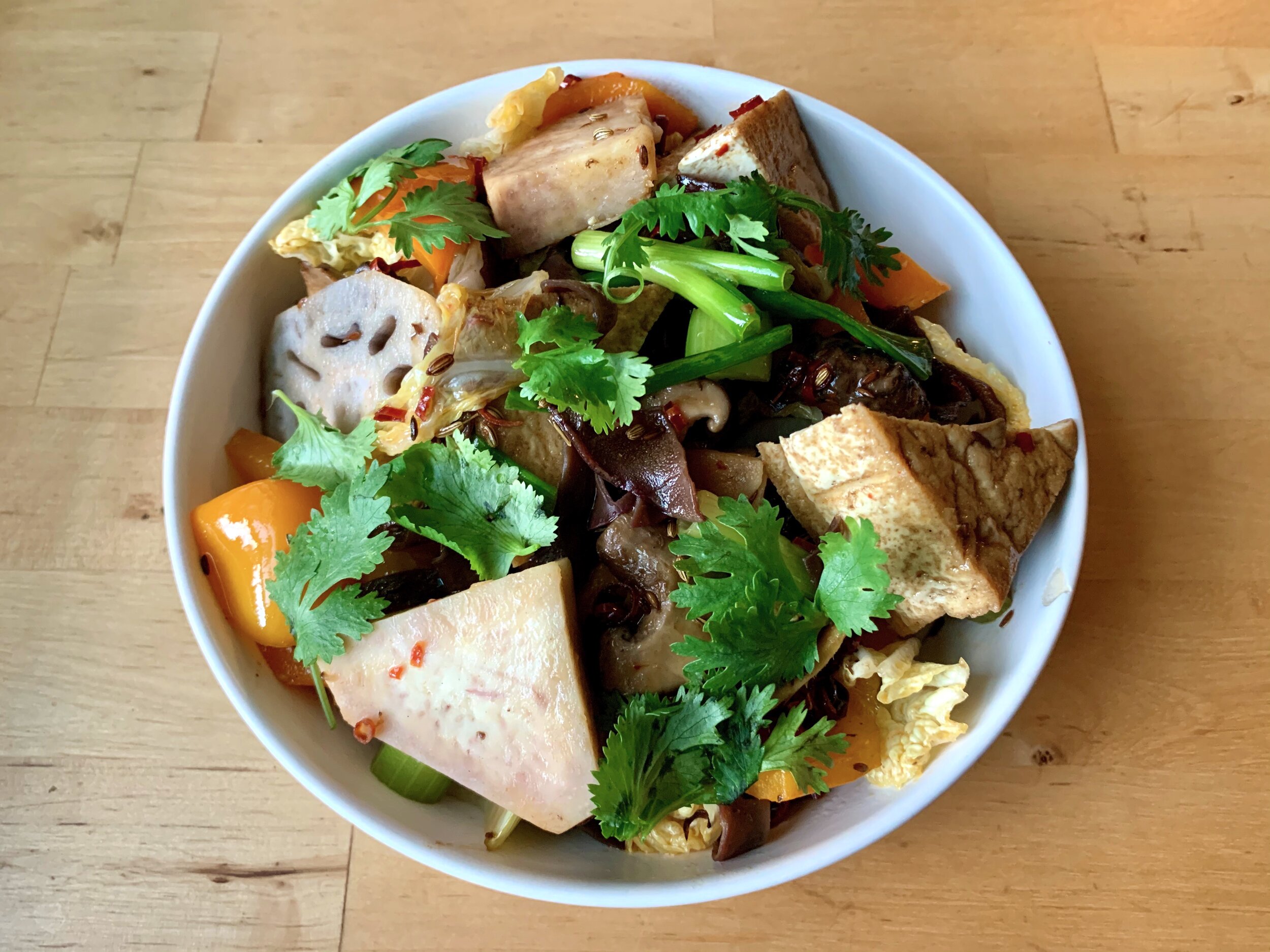
Mala dry pot (麻辣香锅)[1] is a dish which hails from the Chongqing region of the Sichuan province. The dish is known as a “dry pot” by comparison to hot pot, in which ingredients are cooked in soup [2]. The dish was likely a creation of local farmers, who tossed whatever ingredients they had on hand into a wok to be stir-fried with a spicy and savory oil laced with chilis and Sichuan peppercorns. Perhaps reflecting its humble origins, traditional dry pot consists almost entirely of vegetables, a combination of mushrooms, hearty root vegetables such as taro and lotus root, and leafy cabbages. For special occasions, lamb, fish balls, or river shrimp were added to the mix.
The ease with which the dish can be customized and the speed at which it can be prepared makes mala dry pot an ideal fast-casual meal option. Customers simply select the ingredients they want, then the cook prepares the stir-fry in a matter of minutes. Restaurant chains specializing in mala dry pot have become incredibly popular within China, and their popularity is now growing overseas. This formula also works great at home—just about anything in the refrigerator can be tossed into a dry pot.
The spicy oil is the heart of the dish, and we’ll teach you how to make it here. The stir-fry we are preparing today is completely vegetarian, but feel free to add whatever you’d like to your pot. Refer to the Substitutions section of this recipe for a list of common additions!
Ingredients
For the Spiced Oil:
½ cup vegetable oil
2 tbsp Sichuan peppercorns
2 star anise
1 tbsp fennel seeds
1 tbsp cumin seeds
1 cinnamon stick
1 bay leaf
1 inch ginger, sliced
½ cup dried red chilis (or to taste)
For the Stir-Fry:
4 oz taro, sliced
4 oz lotus root, sliced
4 stalks celery
1 bell pepper
3 shiitake mushrooms
1 cup wood ear mushrooms, soaked
5 oz fried tofu
1 small napa cabbage
1 bunch cilantro
3 scallions, chopped
5 cloves garlic
2 tbsp doubanjiang
1 tbsp sugar
2 tbsp Shaoxing rice wine
Begin by par-cooking any hardy vegetables, such as root vegetables, which will not cook quickly in the stir fry. In our recipe, this includes the taro and lotus root. We should also prepare the wood ear mushrooms [3]. Wood ear mushrooms are normally sold in dried form, and must be rehydrated before cooking by soaking them in warm water until softened. When the wood ear mushrooms are soft, chop them into slivers and set aside. Bring a pot of water to a boil, and cut the taro and lotus root into slices about ¼ inch thick. When the water has come to a boil, add the taro and lotus root slices to the pot. Cook for about 10 minutes, or until the root vegetables have softened and are mostly cooked through. Then drain the par-cooked vegetables and set them aside.
While the taro and lotus root cook, we can prepare our remaining ingredients. Cut the fried tofu into triangular pieces. For this recipe, we are looking for firm fried tofu, not the puffy and airy fried tofu varieties. Chop the celery, cabbage, and bell pepper into 1 inch pieces, and slice the shiitake mushrooms. Set all of these vegetables aside for the stir fry.
Now it’s time to make the spicy oil. We will be heating our collection of spices in the oil over low heat for 15 minutes. Cooking the spices over low heat prevents them from burning and allows them to release their fat-soluble flavor compounds. In a wok or large pan, heat ½ cup neutral vegetable oil over low heat. To the oil, we’ll add half of our ginger slices, 2 tablespoons of chopped dried red chilis, and all of our whole spices: the Sichuan peppercorn, star anise, fennel seeds, cumin seeds, cinnamon stick, and bay leaf. Toss the spices in the oil and cook over low heat, stirring occasionally.
If you want to make several mala dry pots, simply make a double or triple batch of this spiced oil, let it cool, and store in a container in the fridge for up to two weeks. Whenever you want to prepare the stir-fry, simply spoon some of the oil into a pan and start cooking.
After 15 minutes, the oil should be fragrant and the spices should have given up most of their flavor. Using a slotted spoon, remove the large whole spices from the oil. It’s fine to leave some of the smaller spices behind—they have been cooked to the point of edibility. If it is important to you to have no whole spices left, however, I recommend passing the oil through a fine mesh strainer.
Now we’re ready to stir fry! Turn the heat up to medium, and add the garlic cloves, remaining ginger slices, sugar, doubanjiang, and remaining red chilis to the oil. Fry the aromatics in the chili oil for 1 minute, stirring constantly, until the garlic and ginger are fragrant. Now turn the heat up to high and add all of the stir-fry ingredients to the wok. If you think they won’t all fit easily in your wok or pan, remove and reserve half of the chili oil and work in two batches, with half of the ingredients at a time. Pour over the rice wine and cook, tossing constantly, for 10 minutes, or until all the ingredients are cooked through. Remove the stir-fry from the heat, sprinkle over fresh cilantro leaves, and serve hot.
Substitutions
If you can’t find doubanjiang, you can substitute Korean gochujang. Keep in mind that different brands of doubanjiang vary greatly in their spice levels. The easiest way to adjust the spice level of this dish is to change the amount of dried red chilis being used. As discussed above, this recipe can be modified with a wide range of ingredients. Listed below are some common options. “Hardy vegetables” are ones that we recommend par-cooking before stir-frying. If you’re using any meat or seafood, ensure that it is fully cooked by frying it in the chili oil for 5 minutes or so before adding the other stir-fry ingredients.
Hardy Vegetables
Taro
Lotus root
Potatoes
Bamboo shoots
Seaweed
Fresh Vegetables
Napa cabbage
White cabbage
Onion
Bok choy
Baby corn
Celery
Bell peppers
Asparagus
Bean sprouts
Shiitake mushrooms
Oyster mushrooms
Enoki mushrooms
Wood ear mushrooms
Protein
Fried tofu
Bean curd (sliced)
Tofu skin
Mung bean vermicelli
Lamb (thinly sliced)
Beef (thinly sliced)
Chicken (1 inch pieces)
Pork (thinly sliced)
Pork balls
Frog legs
Shell-on shrimp
White fish
Clams
Squid (sliced)
Fish balls
Shrimp balls
Fish tofu
[1] The Chinese name for this dish, 麻辣香锅, translates directly to “Fragrant Mala Pot.”
[2] Chongqing, after all, is also well known for its incredibly spicy style of hot pot soup.
[3] Wood ear mushrooms (Auricula auricula-judae) are commonly found in temperate environments around the world. While commonly consumed in East Asia, however, in the rest of the world the mushrooms were not widely consumed outside of medicinal applications.
Recipe
Prep Time: 15 min Cook Time: 35 min Total Time: 50 min
Difficulty: 3/5
Heat Sources: 2 burners
Equipment: pot, large pan or wok, slotted spoon
Servings: 6
Ingredients
For the Spiced Oil:
½ cup vegetable oil
2 tbsp Sichuan peppercorns
2 star anise
1 tbsp fennel seeds
1 tbsp cumin seeds
1 cinnamon stick
1 bay leaf
1 inch ginger, sliced
½ cup dried red chilis (or to taste)
For the Stir-Fry:
4 oz taro, sliced
4 oz lotus root, sliced
4 stalks celery
1 bell pepper
3 shiitake mushrooms
1 cup wood ear mushrooms, soaked
5 oz fried tofu
1 small napa cabbage
1 bunch cilantro
3 scallions, chopped
5 cloves garlic
2 tbsp doubanjiang
1 tbsp sugar
2 tbsp Shaoxing rice wine
Instructions
1. Bring some water to a boil in a pot. Cut the taro and lotus root into ¼ inch slices. Blanch the hardy vegetables (taro and lotus root) for about 10 minutes or until mostly cooked. Drain the par-cooked vegetables and set aside. While the vegetables blanch, prepare the remaining stir-fry ingredients. Cut the tofu into triangles, chop the celery, cabbage, and pepper into 1 inch pieces, slice the shiitake mushrooms, and chop the wood ear mushrooms into slivers.
2. Pour ½ cup vegetable oil into a wok or large pan over low heat. Add to the oil half of the ginger, 2 tbsp dried red chilis, and all of the whole spices: the Sichuan peppercorn, star anise, fennel seeds, cumin seeds, cinnamon stick, and bay leaf. Toss the spices in the oil and cook over low heat for 15 minutes to infuse the oil.
3. Using a slotted spoon, remove the large whole spices from the oil. It’s fine to leave some of the small spices behind (peppercorns, chili, fennel seeds, and cumin seeds).
4. Turn the heat up to medium, and add the remaining ginger, dried red chilis, garlic cloves, sugar, and doubanjiang to the wok. Fry in the chili oil for 1 minute, stirring well.
5. Turn the heat up to high and add all of the stir-fry ingredients to the wok: tofu, shiitake mushrooms, wood-ear mushrooms, celery, pepper, cabbage, taro, and lotus root. Pour over the rice wine and stir-fry for 10 minutes, or until all of the ingredients are cooked through. If your wok or pan is too small to hold all of the ingredients at once, remove and reserve some of the chili oil, and work in batches, with half of the ingredients at a time.
6. Remove the dish from the heat, sprinkle over fresh cilantro leaves, and serve.
